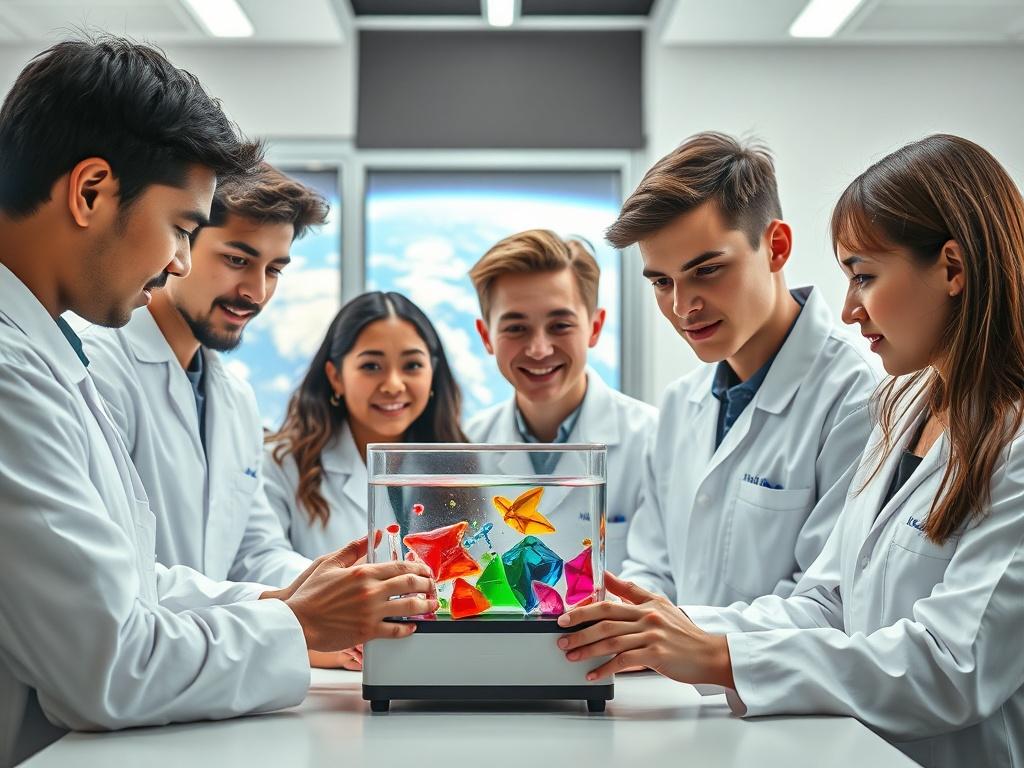
As we venture further into the cosmos, a new generation of scientists is emerging, driven by a passion for exploration and discovery. The global student program to design real microgravity experiments and launch to space is at the forefront of this exciting movement, empowering students from diverse backgrounds to actively contribute to groundbreaking research in environments where gravity is no longer a constraint. By engaging young minds in the complexities of microgravity, this initiative not only enhances scientific understanding but also inspires innovative approaches to solving some of humanity’s most pressing challenges.
In this blog post, we will delve into how this transformative program is reshaping the future of biological experiments in microgravity. We will explore the hands-on experience students gain while designing experiments that could revolutionize our understanding of biological processes in space. From the classroom to the cosmos, these aspiring researchers are utilizing the unique conditions of microgravity to uncover insights that could lead to advancements in medicine, agriculture, and more, paving the way for a new era of scientific exploration.
Unlocking potential: How a global student program is reshaping microgravity research
In an era where space exploration expands beyond the realm of professional scientists, a global student program is paving the way for young innovators to conduct real microgravity experiments. By engaging students from diverse backgrounds, this initiative fosters collaboration and ignites curiosity across the globe. Participants not only gain hands-on experience in designing experiments but also learn valuable skills in teamwork, critical thinking, and problem-solving. As students delve into the complexities of microgravity, they unlock potential breakthroughs in biological research that could lead to significant advancements in areas like medicine, agriculture, and environmental science.
Moreover, this program bridges the gap between education and practical application by enabling students to see their experiments launched into space. This unique opportunity motivates participants to think beyond conventional boundaries and apply their knowledge in a real-world context. As they analyze data collected from their experiments in microgravity, students contribute to a growing body of research that enhances our understanding of biological processes. This global student program transforms aspiring scientists into active contributors in the field of microgravity research, ultimately reshaping our approach to scientific inquiry and discovery.
Designing real microgravity experiments: The student experience in space exploration
In the global student program to design real microgravity experiments and launch to space, students engage directly with cutting-edge research that has tangible implications for science and humanity. Participants collaborate with esteemed scientists and engineers, gaining hands-on experience in designing experiments that leverage the unique conditions of microgravity. By working on projects that explore biological phenomena—ranging from cellular behavior to the effects of prolonged space travel on organisms—students bridge the gap between theoretical concepts and real-world applications. This immersion not only fosters a deeper understanding of biological processes but also equips them with vital skills for future careers in STEM fields.
The program empowers students to think critically and creatively as they tackle complex scientific challenges. Engaging in active problem-solving, they learn to navigate the intricacies of experimental design, from hypothesis formulation to data analysis. Each stage of the process requires rigorous planning and collaboration, as students must consider various factors, such as payload limitations and the impact of microgravity on their biological subject matter. As they prepare their experiments for launch, students experience a sense of ownership and pride, knowing their work contributes to the broader understanding of life in space. This unique opportunity ignites their passion for exploration and solidifies their roles as contributors to the future of scientific discovery.
From classroom to cosmos: The future of biological experiments in microgravity
The future of biological experiments in microgravity holds immense promise, primarily due to the innovative ideas fostered by a global student program. Students, equipped with the knowledge and creativity garnered from their academic backgrounds, are at the forefront of designing experiments that can only be conducted in the unique conditions of space. By utilizing microgravity, they explore complex biological phenomena that are difficult to replicate on Earth, such as cellular growth, protein crystallization, and the effects of radiation on living organisms. These experimental designs not only advance the field of biology but also pave the way for breakthroughs that could benefit humanity, such as advancements in medicine and biotechnology.
Moreover, as students transition from classroom theory to real-world application in space, they gain invaluable experience that prepares them for careers in science, engineering, and technology. Collaborating with mentors, industry professionals, and NASA experts, these students learn to navigate the challenges of designing experiments for microgravity environments, including logistical issues and safety protocols. Upon successful completion of their projects, their findings contribute significantly to our understanding of biological processes and the broader implications for long-term space travel. As students launch their experiments into space, they inspire a new generation of scientists and innovators, ensuring that the exploration of the cosmos continues to thrive.